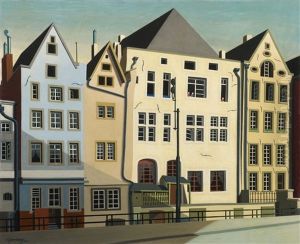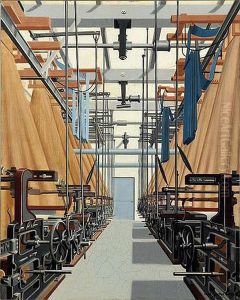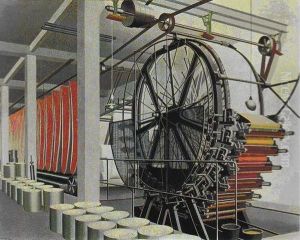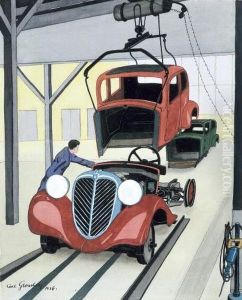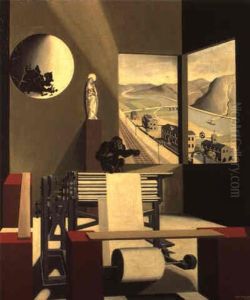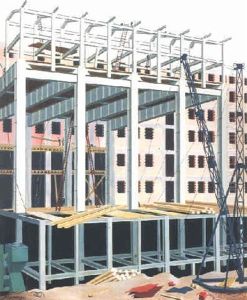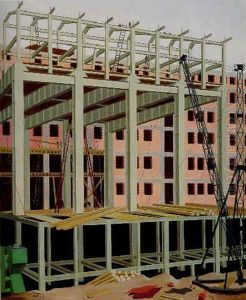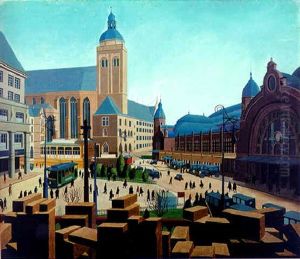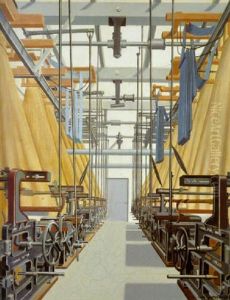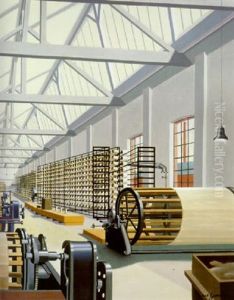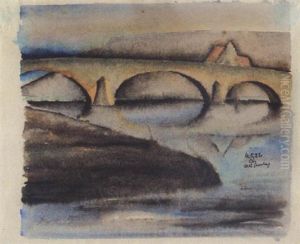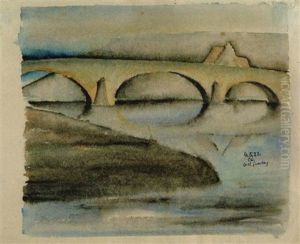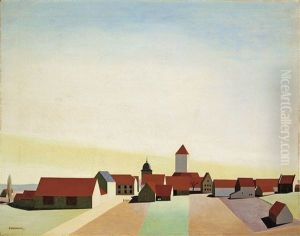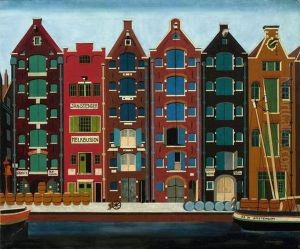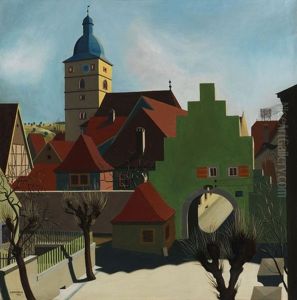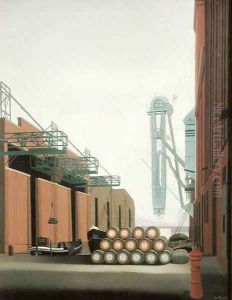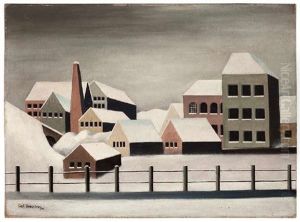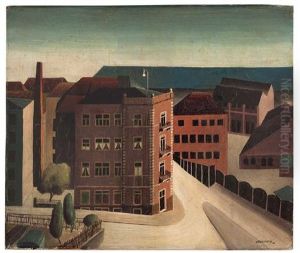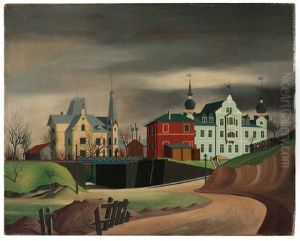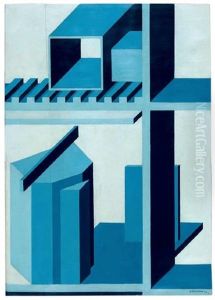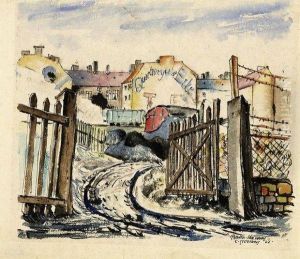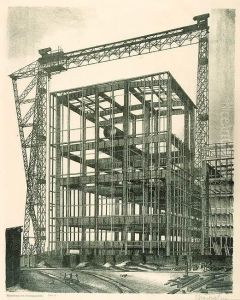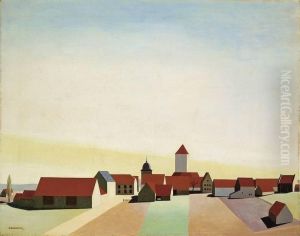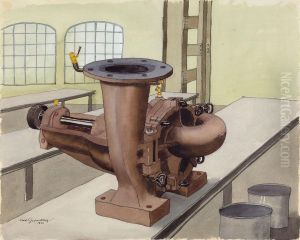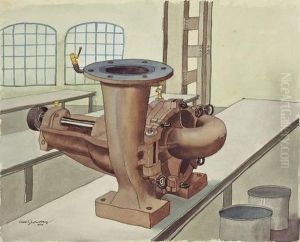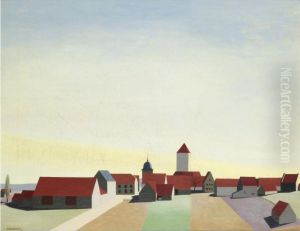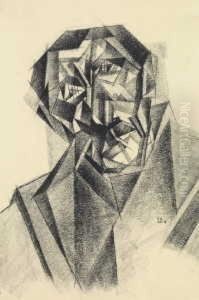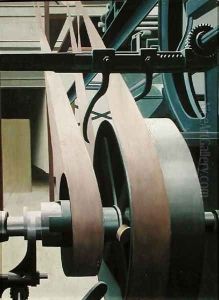Carl Grossberg Paintings
Carl Grossberg, born on September 6, 1894, in Elberfeld, Germany, was an artist known for his precise and detailed style of painting that often categorized him as part of the New Objectivity movement. This movement arose in Germany as a reaction to the emotional intensity of Expressionism, emphasizing a return to unsentimental reality and often focusing on the alienation of individuals in a rapidly modernizing world.
After studying architecture and engineering in Aachen and Munich, Grossberg's interest in art led him to the Weimar Bauhaus in 1923. There, he studied under Lyonel Feininger, who was a significant influence on his artistic development. Grossberg's work typically featured industrial landscapes, machinery, and architectural structures, reflecting his fascination with technology and the modern environment. His precise lines and clear compositions mirrored his engineering background and highlighted his obsession with the aesthetic of the machine age.
During the 1920s and 1930s, Grossberg's paintings were exhibited throughout Germany and internationally. He participated in the influential 1925 Neue Sachlichkeit ('New Objectivity') exhibition in Mannheim, which was a defining moment for the movement. His meticulous technique and the clarity of his vision set him apart from his contemporaries and marked his work as a unique expression of the period's sensibilities.
Unfortunately, Grossberg's life and career were cut short by the turmoil of World War II. He served in the German army and was killed on the Eastern Front in 1940. Despite his relatively short career, his contributions to the New Objectivity movement have left a lasting impression on the history of 20th-century art. His works are collected and exhibited by major museums, and they continue to offer a window into the interwar period's complex relationship with industrialization and the aesthetic of the machine.
